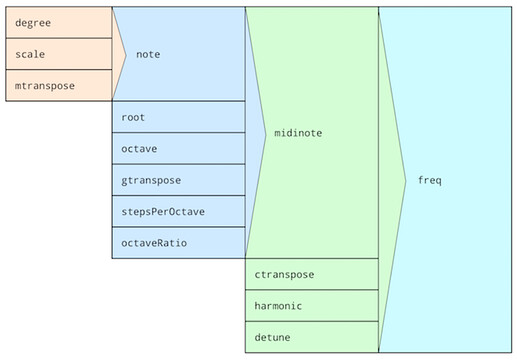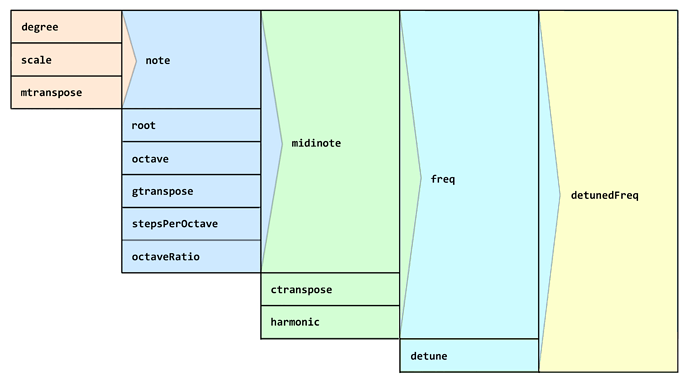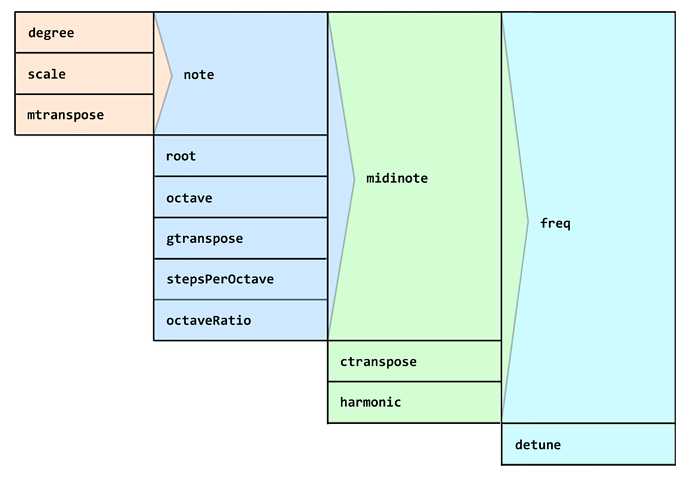Thanks both, this is making sense. I did catch this potential misunderstanding regarding the combined use of detune and midinote — that detune is a linear shift in Hz, which distorts the frequency of a midinote sequence nonlinearly (an example just for the sake of clarity):
s.boot;
(
Pbind(
\dur, 0.3,
\sustain, 0.2,
\midinote, Pseq([69,71,73,74,76],inf),
\detune, -24 //values further from 0 exaggerate the nonlinearity
).play;
)
(
Pbind(
\dur, 0.3,
\sustain, 0.2,
\midinote, Pseq([69,71,73,74,76],inf),
\ctranspose, -0.971 //"normal" equal-tempered sound
).play;
)
My understanding now is that ~detunedFreq is really just an inner mechanism of Event, and that freq is the more central container. My confusion did originate in these naming conventions.
So, from a visual perspective, I agree that it isn’t appropriate to include a fifth detunedFreq column in the image, which would probably just confuse the reader. But, I do think it would make much more sense to move detune from the third column to the fourth column, because it does not “work” with MIDI note numbers in the expected way. Instead, detune is a parameter which is mathematically more closely associated with freq, both conceptually, and literally (as implemented in the ~detunedFreq function as #{ ~freq.value + ~detune })
Would this, then, be more accurate than the current image?


